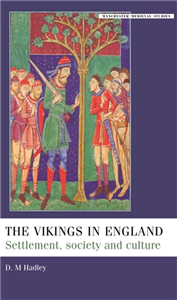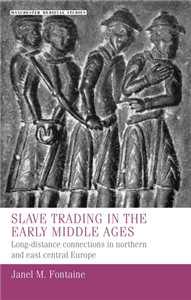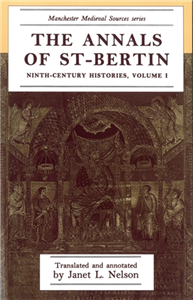Your Search Results
-
Promoted Content
-
Promoted ContentAugust 2006
The Vikings in England
Settlement, Society and Culture
by Steve Rigby, Martin Hargreaves
-
 Trusted Partner
Children's & YAFebruary 2022
Trusted Partner
Children's & YAFebruary 2022Freya und die Furchtlosen - Auf ins Gefecht! (Band 1)
by Jochen Till
Freya and the Fearless (Vol. 1) - Off to Battle! They call themselves "The Fearless" and they want to rob, plunder and pillage for all they're worth. The only problem is that the sight of a little girl makes them wet their pants. Freya has had enough of plundering Vikings and gives Heinar's people a good scare. • A little girl shows the despondent Vikings what a real guy is • Funny sidekicks: The Odin family is watching from heaven • Innovative 90:10 text-image ratio, illustrated in b/w • For fans of ‘Vicky the Viking’ and ‘Asterix & Obelix’. • Volumes 2 and 3 coming in 2022 and 2023 Viking chief Heinar Hookepee leads a small troop of daring men into a new adventure. While it is being widely discussed who exactly should lead the attack, a little girl stands up to them - our heroine Freya. She's fed up with Vikings attacking her village all the time and angrily scolds Hookepee and his men - who are nowhere near as fearless and brave as they always pretend to be. Something has to change: The men have to learn to become real Vikings. And who better to teach them than the fearless Freya? So Freya lands on the Viking ship and, with a lot of wit and clever methods, tries to teach our sissy Vikings everything they are missing.
-
 Trusted Partner
July 2022
Trusted Partner
July 2022Freya und die Furchtlosen - Plündern will gelernt sein! (Band 2)
by Jochen Till / Dominik Rupp
Freya and the Fearless - Plundering is a Skill! (Vol. 2) All Vikings are fearless? Not quite ... They call themselves "The Fearless" and they want to rob, plunder and pillage for all they're worth. The only problem is that the sight of a little girl makes them wet their pants. Freya has had enough of plundering Vikings and gives Heinar's people a good scare.What happens in Vol. 2:The sea is getting narrower and narrower, with land in sight to the right and left. So this must be England. Finally, our brave Vikings can once again plunder, rob and pillage to their heart's content. Heinar and his men sail leisurely up the Thames, until something blocks their way: Unfortunately, the British king's architects built the new bridge much too low. Now no ship can get out or back in and the English have to do without their beloved hot drink: tea. Freya and the Fearless turn Tower Bridge into a suspension drawbridge, bring back tea to the British, and casually invent the bearskin cap along the way.• A little girl shows the despondent Vikings what a real guy is• Funny sidekicks: The Odin family is watching from heaven• Innovative 90:10 text-image ratio, illustrated in b/w• For fans of ‘Vicky the Viking’ and ‘Asterix & Obelix’.• To be continued with Vol. 3 and 4
-
 Trusted Partner
Humanities & Social SciencesFebruary 2025
Trusted Partner
Humanities & Social SciencesFebruary 2025Slave trading in the Early Middle Ages
Long-distance connections in northern and east central Europe
by Janel M. Fontaine
This book examines slave trading in northern and eastern central Europe from the seventh century through the eleventh century, tracing its growth, climax, and decline. Demand from the Islamic world in the ninth and tenth centuries prompted changes in warfare, trade logistics, and administrative responses to slavery in the slaving zones centred on the British Isles and the Czech lands. This study establishes slave trading as a core driver of connectivity and presents a model for this practice in politically fragmented areas of Europe.
-
 Trusted Partner
Humanities & Social SciencesNovember 1991
Trusted Partner
Humanities & Social SciencesNovember 1991The annals of St-Bertin
Ninth-century histories, volume I
by Janet Nelson
The Annals of St-Bertin, covering the years 830 to 882, are the main narrative source for the Carolingian world in the ninth century. This richly-annotated translation by a leading British specialist makes these Carolingian histories accessible in English for the first time, encouraging readers to reassess and evaluate a crucially formative period of European history. Produced in the 830s in the imperial palace of Louis the Pious, The Annals of St-Bertin were continued away from the Court, first by Bishop Prudentius of Troyes, then by the great scholar-politician Archbishop Hinemar of Rheims. The authors' distinctive voices and interests give the work a personal tone rarely found in medieval annals. They also contain uniquely detailed information on Carolingian politics, especially the reign of the West Frankish king, Charles the Bald (840-877). No other source offers so much evidence on the Continental activities of the Vikings. Janet L. Nelson offers in this volume both an entrée to a crucial Carolingian source and an introduction to the historical setting of teh Annals and possible ways of reading the evidence. The Annals of St-Bertin will be valuable reading for academics, research students and undergraduates in medieval history, archaeology and medieval languages. It will also fascinate any general reader with an interest in the development of European culture and society. ;
-
 Trusted Partner
Humanities & Social SciencesJanuary 2013
Trusted Partner
Humanities & Social SciencesJanuary 2013The annals of St-Bertin
Ninth-century histories, volume I
by Janet L. Nelson
The Annals of St-Bertin, covering the years 830 to 882, are the main narrative source for the Carolingian world in the ninth century. This richly-annotated translation by a leading British specialist makes these Carolingian histories accessible in English for the first time, encouraging readers to reassess and evaluate a crucially formative period of European history. Produced in the 830s in the imperial palace of Louis the Pious, The Annals of St-Bertin were continued away from the Court, first by Bishop Prudentius of Troyes, then by the great scholar-politician Archbishop Hinemar of Rheims. The authors' distinctive voices and interests give the work a personal tone rarely found in medieval annals. They also contain uniquely detailed information on Carolingian politics, especially the reign of the West Frankish king, Charles the Bald (840-877). No other source offers so much evidence on the Continental activities of the Vikings. Janet L. Nelson offers in this volume both an entrée to a crucial Carolingian source and an introduction to the historical setting of teh Annals and possible ways of reading the evidence. The Annals of St-Bertin will be valuable reading for academics, research students and undergraduates in medieval history, archaeology and medieval languages. It will also fascinate any general reader with an interest in the development of European culture and society.











